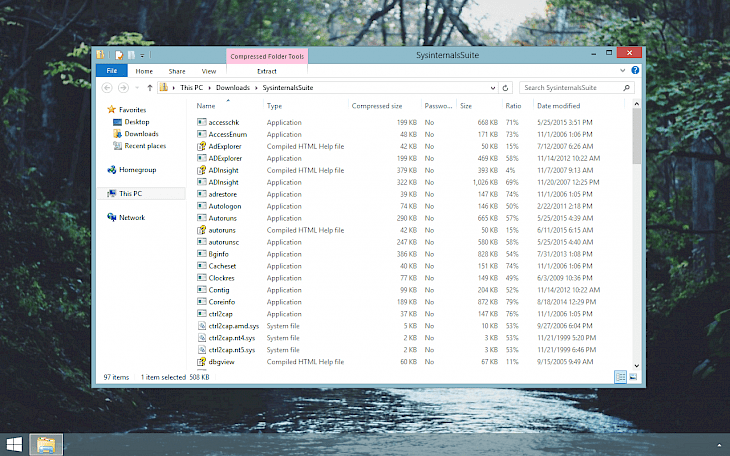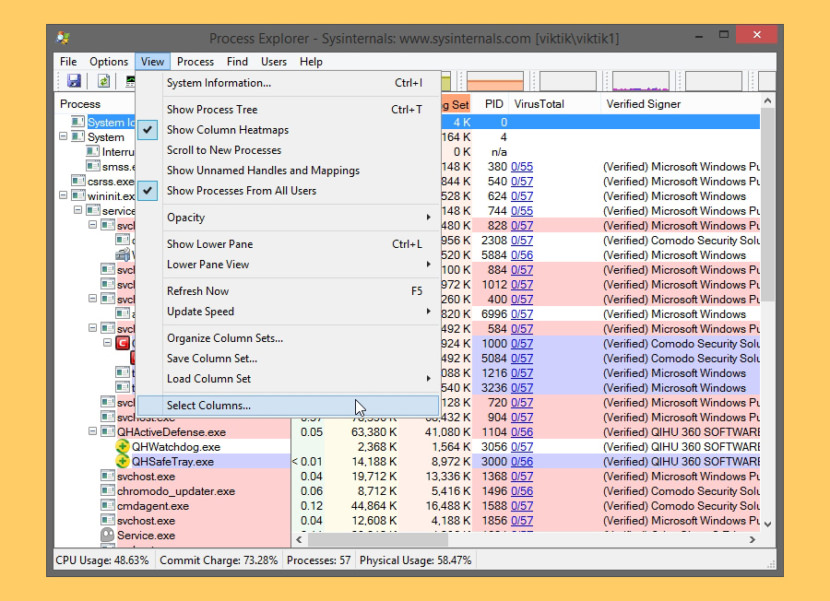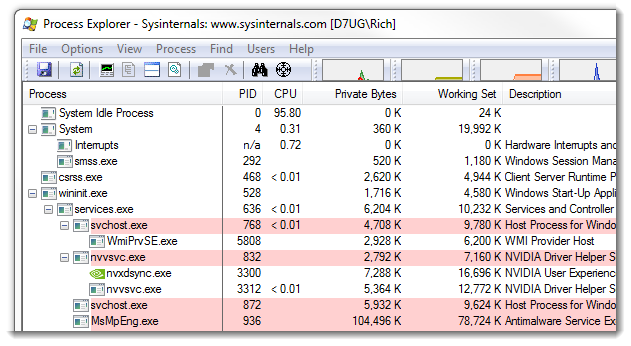

- Windows sys internal process monitor how to#
- Windows sys internal process monitor drivers#
- Windows sys internal process monitor windows 10#
- Windows sys internal process monitor software#
Īn APT28 loader Trojan will enumerate the victim's processes searching for explorer.exe if its current process does not have necessary permissions. ĪPT1 gathered a list of running processes on the system using tasklist /v.

ĪppleSeed can enumerate the current process on a compromised host. Īndariel has used tasklist to enumerate processes and find a specific string. Īgent Tesla can list the current running processes on the system. ĪDVSTORESHELL can list running processes. You can also tune up your computer for peak performance through using tools like Auslogics BoostSpeed, which effectively diagnoses your Windows system, cleans out junk files, restores system stability, and improves speed and performance.4H RAT has the capability to obtain a listing of running processes (including loaded modules).
Windows sys internal process monitor how to#
There you go – it’s fairly easy to learn how to kill all the processes in Windows 10/11 or just a specific group of processes. Once you do that, you will be able to instantly terminate all unresponsive processes by simply using the Ctrl + Alt key combo whenever needed. Once you have the app, you can assign a hotkey to a Task Kill desktop shortcut. After you have the WinHotKey app, open the program and follow the prompts of the WinHotKey setup wizard.First, you will need to download the WinHotKey app via your web browser.You can also stop all current running processes on Windows 11 via Task Manager, using CloseAll tool and PowerShell and, finally, by performing a clean boot of your PC.Īdditionally, you can also set up a hotkey on your Windows 11 for terminating all unresponsive processes on your computer. You can stop all processes on Windows 11 via Command Prompt (see how to terminate Windows 11 processes via the Command Prompt above). With that, when it comes to quickly stopping all processes on the new OS, you can still use all the same methods as listed above for Windows 10. There is also a more Mac-like interface in place and lots of fixes for previously reported bugs. For instance, Windows 11 comes with a new design that features a centered Start menu and Taskbar. The new operating system comes with a number of improvements and upgrades. But how can you do the same on Windows 11?
Windows sys internal process monitor windows 10#
How to kill all the processes in Windows 11?Īs you can see, stopping all processes on Windows 10 is pretty easy. Enter the command taskkill /F /IM iexplore.exe and then press Enter. To end all Internet Explorer processes, use the Command Prompt as an administrator. Kill all related processes by unchecking Continue running background apps when Google Chrome is closed. To end all Google Chrome processes, go to Settings and then Show advanced settings.

Turn off the Let apps run in the background To end all background processes, go to Settings, Privacy, and then Background Apps. How about if you want to end specific processes, programs, or apps in Windows 10? Here are particular steps to take:
Windows sys internal process monitor drivers#
Kill a process by its PID by running this command: Stop-Process -ID PID -Force.Ĭlean boot your computer – This technique allows you to start Windows through only a minimal number of drivers and programs. Kill a process by its name by executing this cmdlet: Stop-Process -Name “ProcessName” -Force. Type the command Get-Process for you to see the list of running processes. Kill a process that runs elevated by opening PowerShell as Administrator. Take note, though, that it leaves Explorer.exe open. KillThemAll, a creation of a Neowin user, also does the same task but gives users a chance to save their data.
Windows sys internal process monitor software#
Use CloseAll and other powerful toolsįreeware tool CloseAll is third-party software that automatically closes all running processes, leaving the user on Desktop. End all the processes under a single cluster through right-clicking on that cluster and choosing End Task. More recent Windows 10 versions have related processed bundled under a common cluster.


 0 kommentar(er)
0 kommentar(er)
